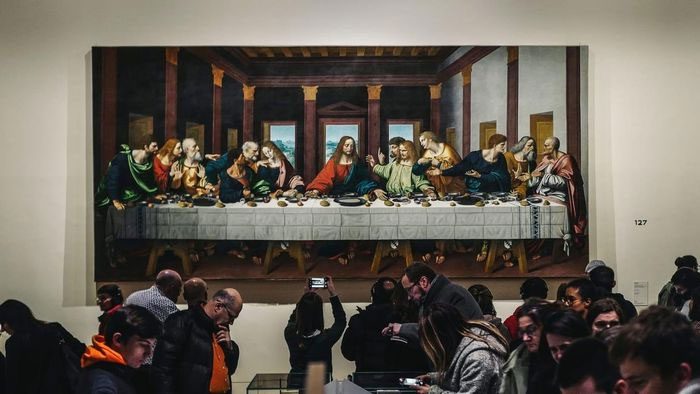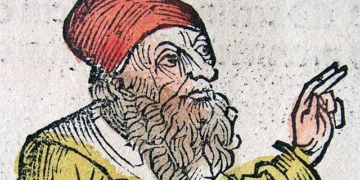According to a new study, master painters such as Leonardo da Vinci, Sandro Botticelli, and Rembrandt may have utilized protein, particularly protein from egg yolks, in their oil paintings.
As reported by CNN, traces of protein have long been discovered in classical oil paintings, although they were often thought to be the result of contamination.
A new study published on March 28 in the journal Nature Communications suggests that the incorporation of this protein into oil paints may have been intentional. This research sheds light on the painting techniques of the Old Masters, the most talented European artists of the 16th, 17th, and early 18th centuries, and how they prepared their paints for work.
Ophélie Ranquet, the study’s author from the Institute of Mechanical Process Engineering at Karlsruhe Institute of Technology in Germany, stated: “There are very few written sources on this issue, and no previous scientific work has studied this topic as deeply as we have. Our results show that even with a very small amount of egg yolk, you can achieve remarkable changes in oil paint properties, demonstrating how beneficial it can be for artists.”
It turns out that simply adding a little egg yolk to the works can yield long-lasting effects, not just aesthetically.
Eggs and Oil

Image source: Getty Images
Compared to the paint concocted by ancient Egyptians, known as tempera (which combined egg yolk with pigment and water), oil paint produces richer colors, allows for smoother color transitions, and dries much faster, making it usable days after mixing. However, oil paint (which uses linseed oil or turpentine instead of water) also has drawbacks, such as being more susceptible to darkening and degradation from light exposure.
Because painting is a manual and experimental process, it is possible that these masters added egg yolk to a type of paint that first appeared in Central Asia during the 7th century before spreading to Northern Europe in the Middle Ages and to Italy during the Renaissance.
In this study, researchers recreated the paint-making process using four components: egg yolk, distilled water, linseed oil, and pigment to mix two popular and important colors, lead white and blue.
Ms. Ranquet remarked: “Adding egg yolk is beneficial because it can significantly adjust the properties of these paints.” For instance, paint with egg yolk contains oxidizing agents which slow down the oxidation process.
Chemical reactions between the oil, the pigments, and the protein in the yolk directly influence the paint’s behavior and viscosity. For example, lead white is quite sensitive to humidity, but if coated with a layer of protein, it can resist higher humidity levels, making the paint considerably easier to use.
Ms. Ranquet analyzed: “On the other hand, if you want something harder without needing to add more pigment, then with just a little egg yolk, you can create a high-gloss paint layer.”
According to Ms. Ranquet, for centuries, painters have wanted to use less pigment because certain pigments—such as lapis lazuli, used to create ultramarine blue—are more expensive than gold.

The painting “The Madonna of the Carnation” at the Alte Pinakothek in Munich, Germany, is one of Leonardo da Vinci’s early works. The wrinkles of the oil paint are clearly visible on the face. (Image: Getty Images).
Direct evidence of the influence of egg yolk in oil paint can be observed in Leonardo da Vinci’s “Madonna of the Carnation.” This painting was one of the artworks studied and is displayed at the Alte Pinakothek in Munich, Germany. The piece shows clear wrinkles on the face of the Virgin Mary and the child.
Ms. Ranquet described: “Oil paint starts to dry from the surface downwards, which is why it wrinkles.”
One reason for the wrinkling of paint could be due to insufficient pigment in the paint, and the study has shown that this can be avoided by adding egg yolk: “That’s quite wonderful because you have the same amount of pigment in your paint, but thanks to the egg yolk, everything changes.”
Since the wrinkles appear within a few days, it is likely that Leonardo and other masters were aware of this phenomenon, as well as the beneficial properties of adding egg yolk to oil paints, including moisture resistance. “Madonna of the Carnation” is one of Leonardo’s earliest paintings, created at a time when he may still have been trying to master the popular new oil medium.
New Insights into Classical Paintings
Another painting observed during the study was Botticelli’s “The Lamentation Over the Dead Christ,” also displayed at the Alte Pinakothek. The work was primarily painted with tempera, but oil paint was used for the background and some secondary elements.
Ms. Ranquet said: “We know that some parts of the painting exhibit typical strokes of oil painting, but we discovered the presence of protein. Because there is very little protein and it is hard to detect, this could be mistakenly interpreted as contamination. In the workshops, artists used many different materials, and it’s possible that egg only appeared from tempera.”
However, since the addition of egg yolk produces such remarkable effects on oil paint, the presence of protein in the work could be a sign of intentional use. Ms. Ranquet hopes that these initial findings will attract more attention and curiosity to this under-researched topic.
Maria Perla Colombini, a professor of analytical chemistry at the University of Pisa in Italy, agrees with the study: “This fascinating study provides a new scenario for understanding old painting techniques… This new knowledge contributes not only to better preservation and safeguarding of artworks but also to a deeper understanding of art history.”




















































